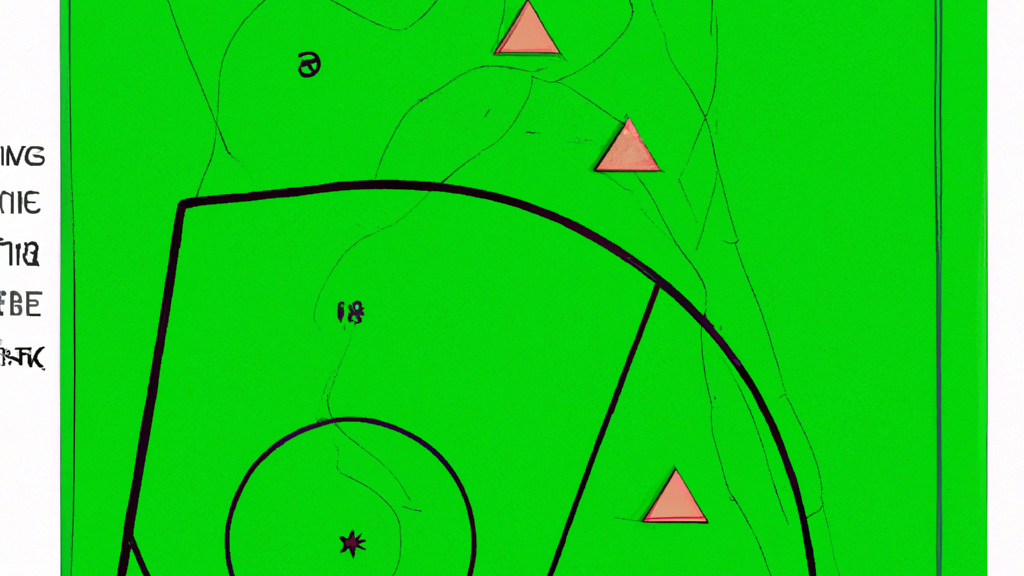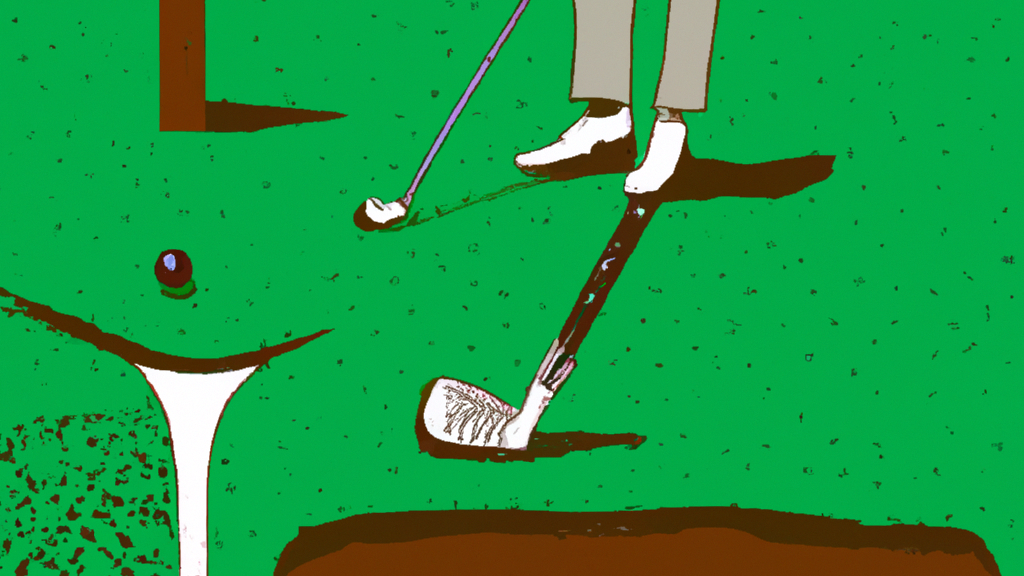THE IMPORTANCE OF RELAXATION IN GOLF: FINDING CALM AND BALANCE ON THE COURSE
Golf is a game that requires a great deal of focus, precision, and patience. It’s no secret that golfers need to be in a relaxed state of mind to perform at their best. The Importance of Relaxation in Golf: Finding Calm and Balance on the Course cannot be overstated. Golfers who are tense, anxious, or stressed out are more likely to make mistakes, miss shots, and lose their cool on the course. In this blog post, we will explore the benefits of relaxation in golf and how it can help you improve your game.
Whether you’re a seasoned pro or a beginner, finding calm and balance on the course is essential to your success. So, sit back, relax, and let’s dive into the world of golf and the importance of relaxation.

Golf is a sport that requires a lot of focus, patience, and skill.
It is a game that can be both mentally and physically challenging, and it is important to find ways to relax and stay calm on the course. The importance of relaxation in golf cannot be overstated, as it can help you find balance, improve your game, and enjoy the experience more fully.
When you are relaxed, you are better able to focus on the task at hand. You are less likely to be distracted by external factors, such as the weather, noise, or other players. You are also less likely to be affected by internal factors, such as anxiety, stress, or negative thoughts. By finding calm and balance on the course, you can improve your mental clarity and make better decisions about your shots.
1. Practice Mindfulness
One of the best ways to relax on the golf course is to practice mindfulness. Mindfulness is the practice of being present in the moment, without judgment or distraction. It involves paying attention to your thoughts, feelings, and sensations, and accepting them without trying to change them. By practicing mindfulness, you can become more aware of your body and your surroundings, and you can learn to let go of negative thoughts and emotions.
To practice mindfulness on the golf course, start by taking a few deep breaths before each shot. Focus on your breath as you inhale and exhale, and let go of any tension or stress in your body. Then, take a moment to observe your surroundings. Notice the colors, textures, and sounds around you, and appreciate the beauty of the course. Finally, focus on your shot. Visualize the ball going where you want it to go, and trust your instincts as you swing.
2. Use Visualization Techniques
Another way to relax on the golf course is to use visualization techniques. Visualization involves creating mental images of your desired outcome, and using these images to guide your actions. By visualizing your shots before you take them, you can improve your confidence and accuracy, and reduce your anxiety and stress.
To use visualization on the golf course, start by imagining your ideal shot. Picture the ball flying through the air, landing on the green, and rolling towards the hole. Then, focus on your body and your swing. Visualize yourself making a smooth, fluid motion, and hitting the ball with precision and power. Finally, trust your visualization and let go of any doubts or fears.
3. Try Other Relaxation Techniques
In addition to mindfulness and visualization, there are many other relaxation techniques that can be helpful on the golf course. These include deep breathing, progressive muscle relaxation, and guided imagery. Deep breathing involves taking slow, deep breaths and exhaling slowly, which can help to calm your nervous system and reduce your stress levels. Progressive muscle relaxation involves tensing and relaxing different muscle groups in your body, which can help to release tension and promote relaxation. Guided imagery involves listening to a recording or a coach who guides you through a visualization or relaxation exercise.
Regardless of which relaxation technique you choose, it is important to practice it regularly in order to see the benefits. You may find that some techniques work better for you than others, so it is important to experiment and find what works best for you. You may also find that different techniques work better in different situations, such as when you are feeling anxious or stressed versus when you are feeling calm and focused.
Physical Benefits of Relaxation
In addition to the mental benefits of relaxation, there are also physical benefits to be gained on the golf course. When you are relaxed, your body is more fluid and flexible, which can help you to make smoother, more accurate swings. You are also less likely to experience muscle tension or fatigue, which can improve your endurance and stamina.
To enhance the physical benefits of relaxation, it is important to maintain good posture and alignment on the golf course. This means standing tall, with your shoulders back and your feet shoulder-width apart. It also means keeping your head still and your eyes focused on the ball, and maintaining a smooth, fluid swing. By practicing good posture and alignment, you can reduce your risk of injury and improve your overall performance on the course.
Conclusion
In conclusion, the importance of relaxation in golf cannot be overstated. By finding calm and balance on the course, you can improve your mental clarity, make better decisions, and enjoy the experience more fully. Whether you choose to practice mindfulness, visualization, or other relaxation techniques, it is important to make relaxation a regular part of your golfing routine. By doing so, you can enhance your physical and mental well-being, and become a better, more confident golfer.

- 5 Tips for Calming Your Nerves on the Golf Course
Keep reading to find out how to calm nerves while golfing. … realize that you’re getting nervous while golfing, you’ll need to take some steps to relax. - Escape to Wellness Retreats in Pure Michigan | Michigan
The Spa at the JW Marriott provides a treatment menu to help any visitor find calm and balance. Choose the massage that best suits your needs: aromatherapy, … - Six tips to restore calm and balance in your life – Point Walter Golf …
Apr 15, 2020 … Jump onto the Home Fitness Network for your program and classes. Meditation. Meditation is the practice of turning your attention to the present … - Palm Springs Spa Resort, La Quinta Resort & Club
This massage will create a relaxed and balanced mind and body. It is performed over loose-fitting clothing. Sports Massage. 50 minutes | $205 / 80 minutes | … - From Chaos To Calm: How A Meditation And Golf Program Is …
Apr 17, 2023 … At the lush Heroes Golf Course at the West LA VA, Veterans take in the fresh air and … “They find meditation personally transformative. - Meditation for Golf: Calm your Mind to Play Better – The Left Rough
Controls Anxiety. If you’re like most golfers, chances are you get anxious from time to time on the course. Even if you don’t consider … - Overcome Golf Anxiety – Remedy Nervousness on the Golf Course
Jun 13, 2022 … You need to balance mental focus and calm with infinite physical variables that can all make or break your game. This makes anxiety and mental … - Search Programs – University of Washington | Recreation (IMA)
You will feel stronger, healthier and more balanced after this class! … mudras, bandhas, and meditation techniques, you will balance each chakra to find … - Orlando Meeting And Convention Hotel | Golf Resort Orlando
Embrace nature’s harmony and balance indoors via Spanish revival architecture … Wherever you find yourself in Rosen Shingle Creek, our staff—stalwarts of … - Yoga | Hempstead Town, NY
Kripalu is a dynamic class that involves yoga postures with calm breathing techniques. You will find peace and tranquility as you meditate your conscious …
The lesser-known side of The Importance of Relaxation in Golf: Finding Calm and Balance on the Course
- Golf originated in Scotland in the 15th century and was initially played with a stick and pebble.
- The first golf club established outside of Scotland was the Royal Blackheath Golf Club in England, founded in 1766.
- The Masters Tournament, one of the four major championships in professional golf, has been held annually at Augusta National Golf Club since its inception in 1934.
- Professional golfer Tiger Woods holds numerous records including being tied for most PGA Tour wins (82) and holding the lowest career scoring average (68.7).
- In addition to physical skill, mental toughness is crucial for success on the golf course as players must remain focused despite distractions such as weather conditions or noisy crowds.
- Many country clubs offer amenities beyond just golfing such as tennis courts, swimming pools, fine dining restaurants and even spas.
- Caddies have been an integral part of professional golf since its early days but are now less commonly used due to advancements in technology like GPS devices that provide distance measurements on courses.





